How to stop your dog from begging for food when you're at the table
This behavioural problem is very common in dogs, but it can be solved
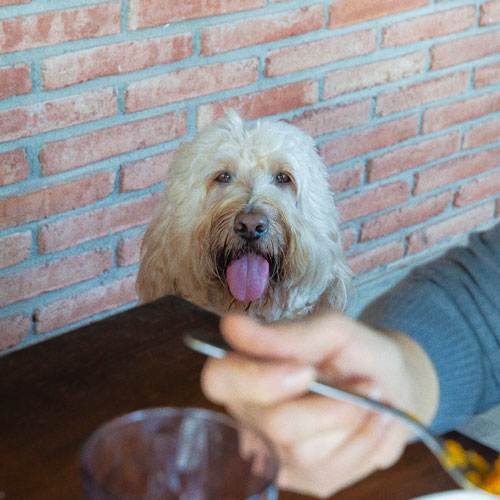
WHY YOUR DOG WANTS TO EAT YOUR FOOD
Approximate reading time : 8 minutes
The situation is very common and recognisable to almost anyone with a dog. Mealtime arrives and there's your pet, ready and positioned to start their string of whining, crying and paw movements to achieve a single goal: to get a little piece of the food from the table. And yes, we know, dogs can use their best tricks to convince you of this, like making those pitiful eyes that you can hardly resist. But trust us, no matter how much you love your dog, it's not a good idea to give them food from the table. Even if you only do it once in a while, it will be so attractive to your dog that in the long run it could create a very annoying habit for you and your environment, but also for them.
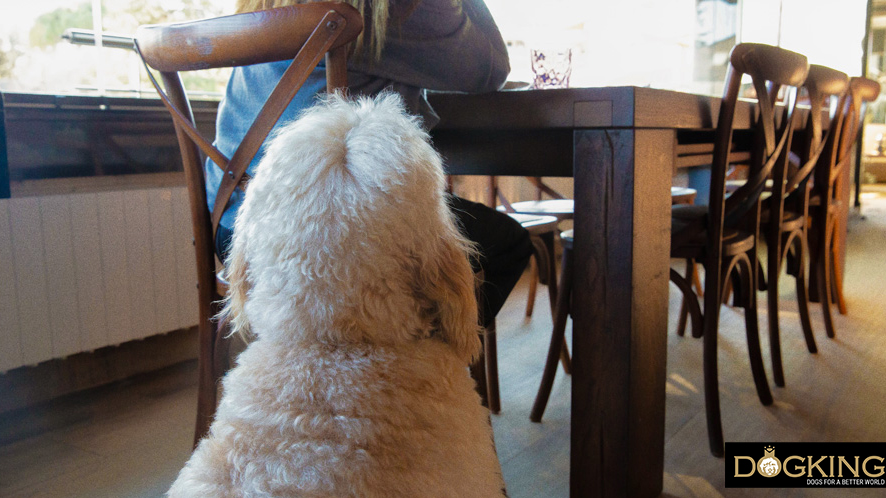
Table of contents
1- 8 tips to stop your dog from begging at the dinner table
2- Is it bad if my dog begs for food at the table?
8 tips to stop your dog from begging at the dinner table
A begging dog's reactions to food on the table can be more mild and spaced out or increasingly intense and continuous, with the dog barking or fidgeting to get their piece of food. This bad habit, which can be very uncomfortable for you and your visitors, has an explanation. Besides, of course, how tasty and delicious human food is to them the wolves that are their ancestors are born hunters, so they are always on the lookout for their prey (food, in this case).
However, if a dog begs for food from the table insistently, chances are that at some point in the past this strategy worked and they received food after whimpering or crying for it. Begging for food is a learned behaviour that, even if you don't particularly mind or find it funny, is not good for your dog, as they may become very anxious and tense when their hunting instincts are not satisfied. To resolve this conflictive situation, here are some tips to prevent your pet from begging for food while you are at the table.
1. Set a feeding schedule
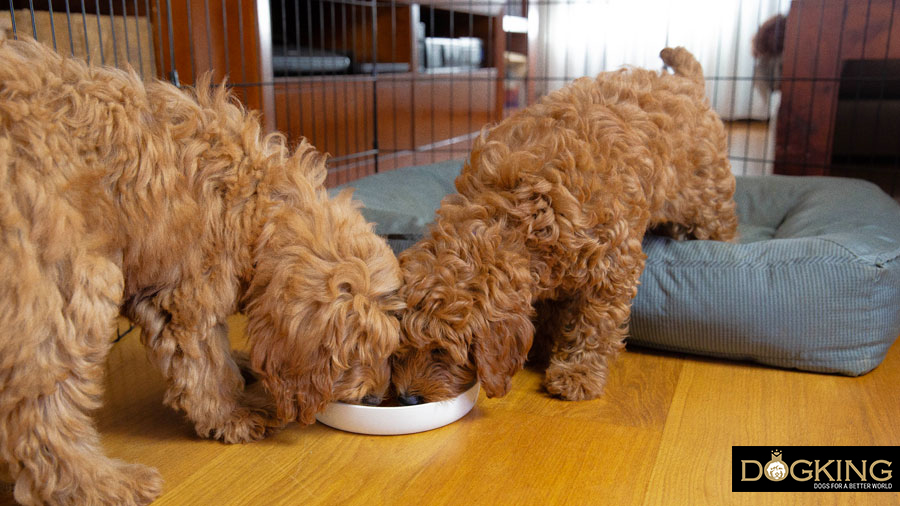
Your dog has an internal clock that you can use to your advantage. If you always offer food at the same times, your dog will learn to predict when it's their turn to eat and won't feel as anxious about the food on your table. If their feeding schedule is not organised, your pet won't know when food is next available, which will heighten their instinct to see that you have delicious human food on your table.
2. Never give them food from the table, (not you or anyone else)
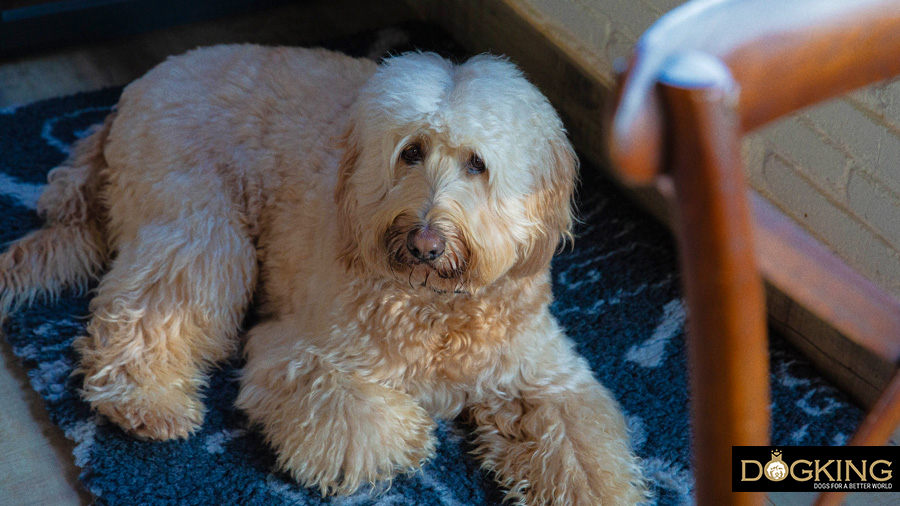
When it comes to dog behaviour, every little mistake is costly. In other words, be firm about not offering your dog food from the table, because just once you do it, you can create a memory, and this memory can create a habit in your pet. But be careful, because this decision should not only be taken by you, but also by all the members of the household and the other people who interact with them when they come to visit or when they go to other houses. Inform them that they should never give food to your pet while you are at the table.
3. Ignore their calls for attention
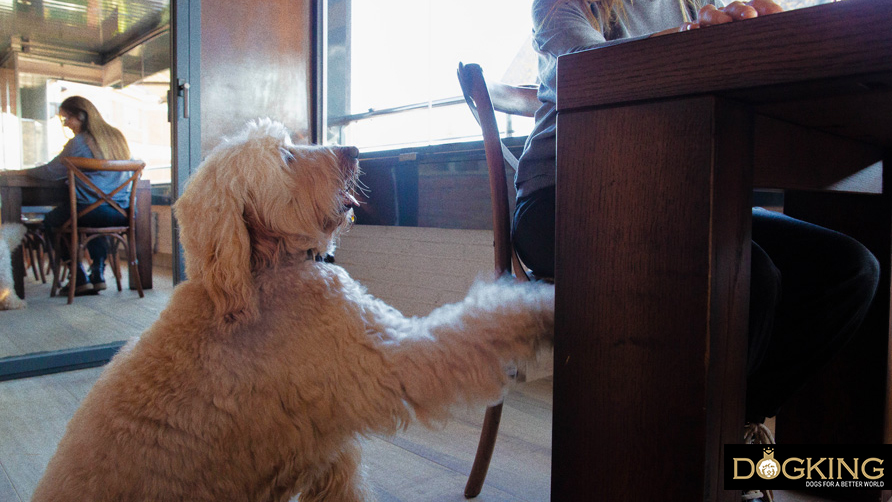
If you are late to the previous tip and have, on occasion, given in to your dog's piercing gaze when they ask for food, don't worry. We're all human, and while it may take more time to reverse this behaviour, there's still hope. We're not going to kid you, even if your dog is satiated or has an exact feeding time, they may still prefer your food to theirs and, because they once tasted it when you gave it to them at the table, they will relentlessly try to insist. At this point, your attitude should be to ignore them completely. Do not scold or talk to them as any reaction on your part, however negative, may reinforce this behaviour. Simply act as if your dog is not there until they give up.
4. Training to keep them from begging
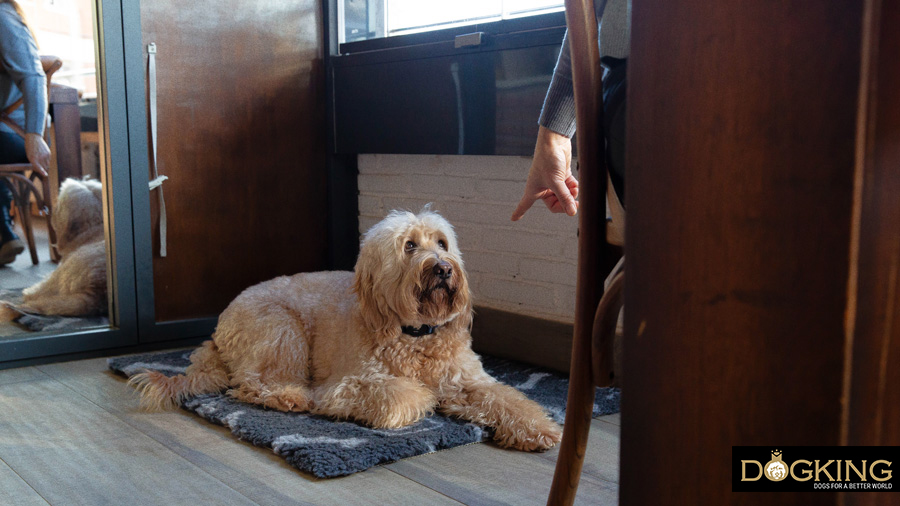
When we hear the word training we immediately think of long and costly processes, and although it is true that in some cases it can be, in most dogs it is relatively simple to change behaviour. If your pet, despite ignoring them completely, insists on asking for food and becomes increasingly nervous, teach them the ‘NO’ signal, which will be very helpful in this and other situations. Then lead them to an area away from the table where you have previously placed her bed. You can do this by simply getting up and going over there so that they will follow you or by giving them a treat to sniff so that they will follow your lead. Ask them to sit and, when they do, offer them the snack. Then go back to your spot and, if the dog comes back to ask, repeat the operation, but this time do not offer a treat when they get to their bed. Repeat as many times as necessary until your pet stays calmly in their area and, now, reward them with a biscuit and leave them a toy to entertain them for a while. It is important that your dog understands that this is the attitude you expect from them while you are eating at the table. After a while, your dog will probably insist again. Don't worry, repeat the whole process and space out the treats more and more. In the end, you will get them to stay in their bed all the time while you eat. It's a question of patience and perseverance.
5. Don't punish or lock them up
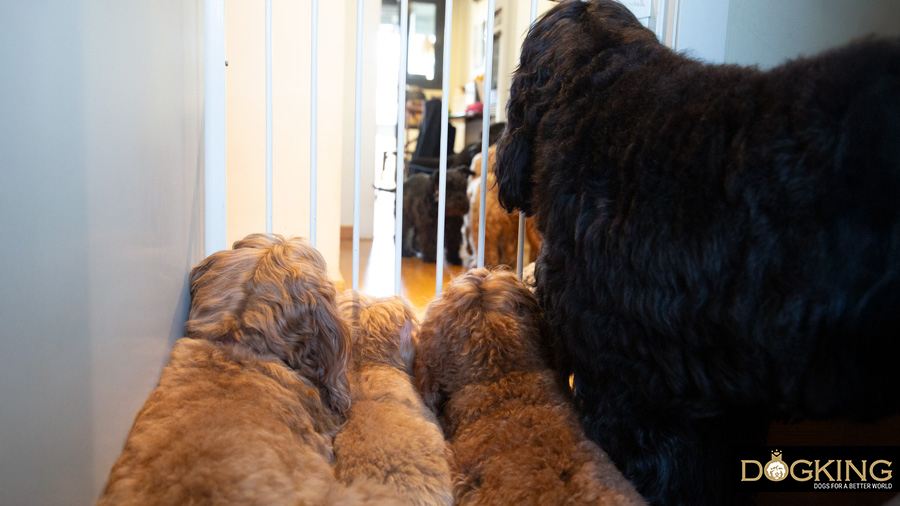
It is not a good idea to shout or scold your dog while they are begging, but neither is it a good idea to lock them in a room unless there is a training strategy behind it. If you put a dog in a closed room without any adaptation process, they can become very nervous and develop anxiety because they don't know what is going on. If you want your dog to be in another room while you eat or on the other side of a barrier (like a puppy park), do it in a controlled way. You can follow the same steps as for training them to stay in their bed, but to teach them that you want them to stay in the place you choose in a calm manner, without crying or nervousness.
6. Offer a fun distraction
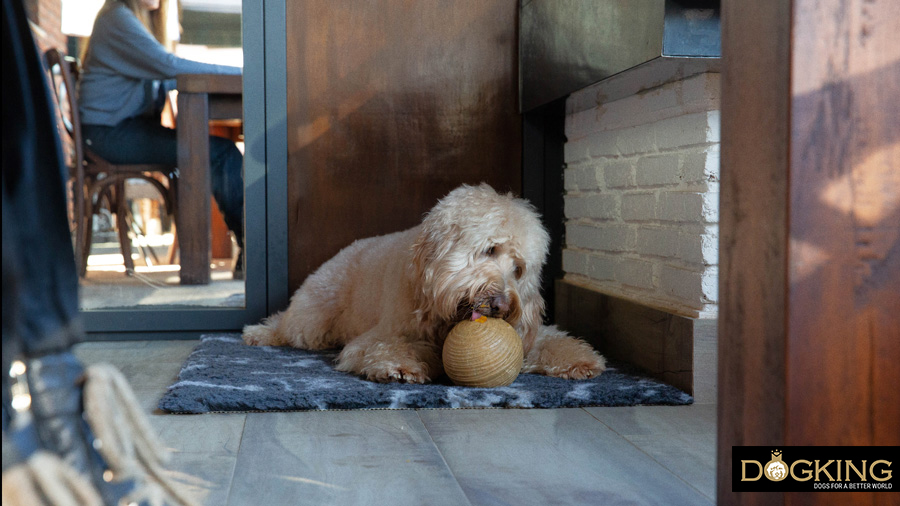
One thing that can work for you is to distract your dog at mealtimes. When you go to the table, offer them an interactive toy that they like and is very entertaining. This will keep them focused on the task and they won't be so inclined to beg for food from the table.
7. Give them your food (but off the table)
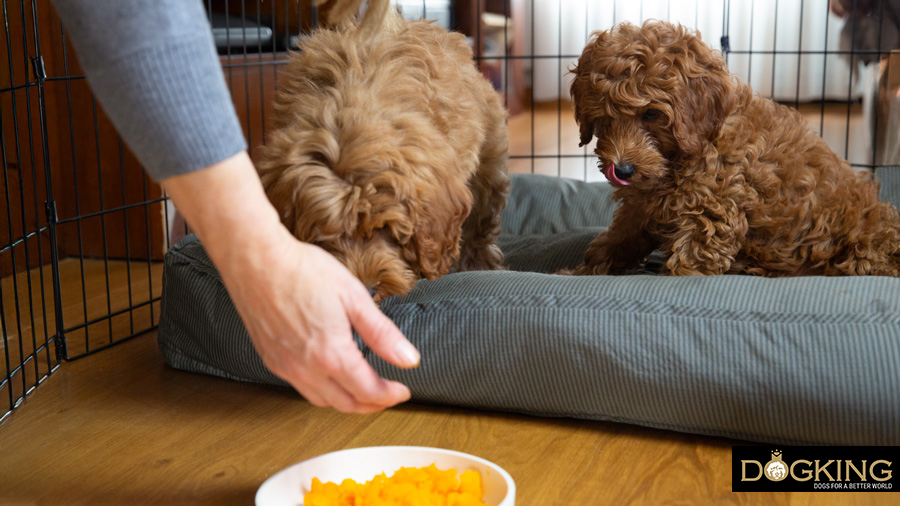
Ultimately, if your dog is very attracted to your food, you can keep a piece of a safe food for them and always give it to them off the table. We recommend that this should not be shortly before or shortly after mealtime, so that they cannot link one thing to the other. Simply surprise them at some other time of the day with a little bit of leftovers or a piece of apple that you are eating in the kitchen. Just be aware that not all foods suitable for people are suitable for dogs. Consult your vet if you have any doubts about what food you can feed your dog.
Is it bad if my dog begs for food at the table?
The behaviour of your dog begging for food when you are at the table is not bad in itself. It is a primal impulse that is very difficult for them to control, especially if their begging strategy has ever worked for them. However, if you feel your dog has excessive food cravings and their behaviour does not improve with well-planned training, take them to the vet for a check-up. It's unlikely, but illnesses such as diabetes or nutritional deficiencies could be behind your dog's food habit.
In most cases, this begging behaviour can be solved with training and a few tricks. Certain dogs, because of their temperament, are particularly easy to teach. This is the case with the Australian Cobberdog, which is very docile and adaptable by nature. With the right training you will avoid this type of behaviour and you can continue to enjoy your pet without any setbacks..